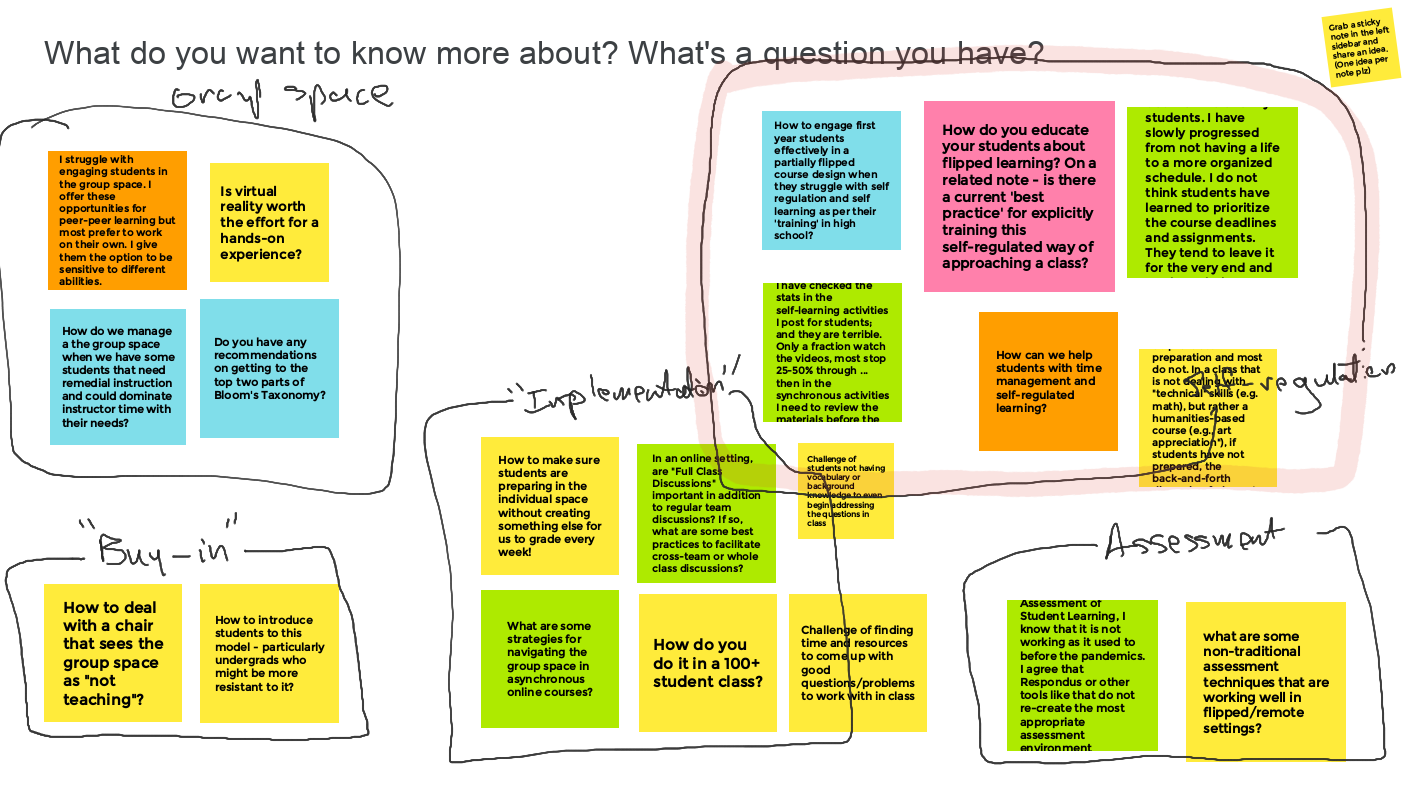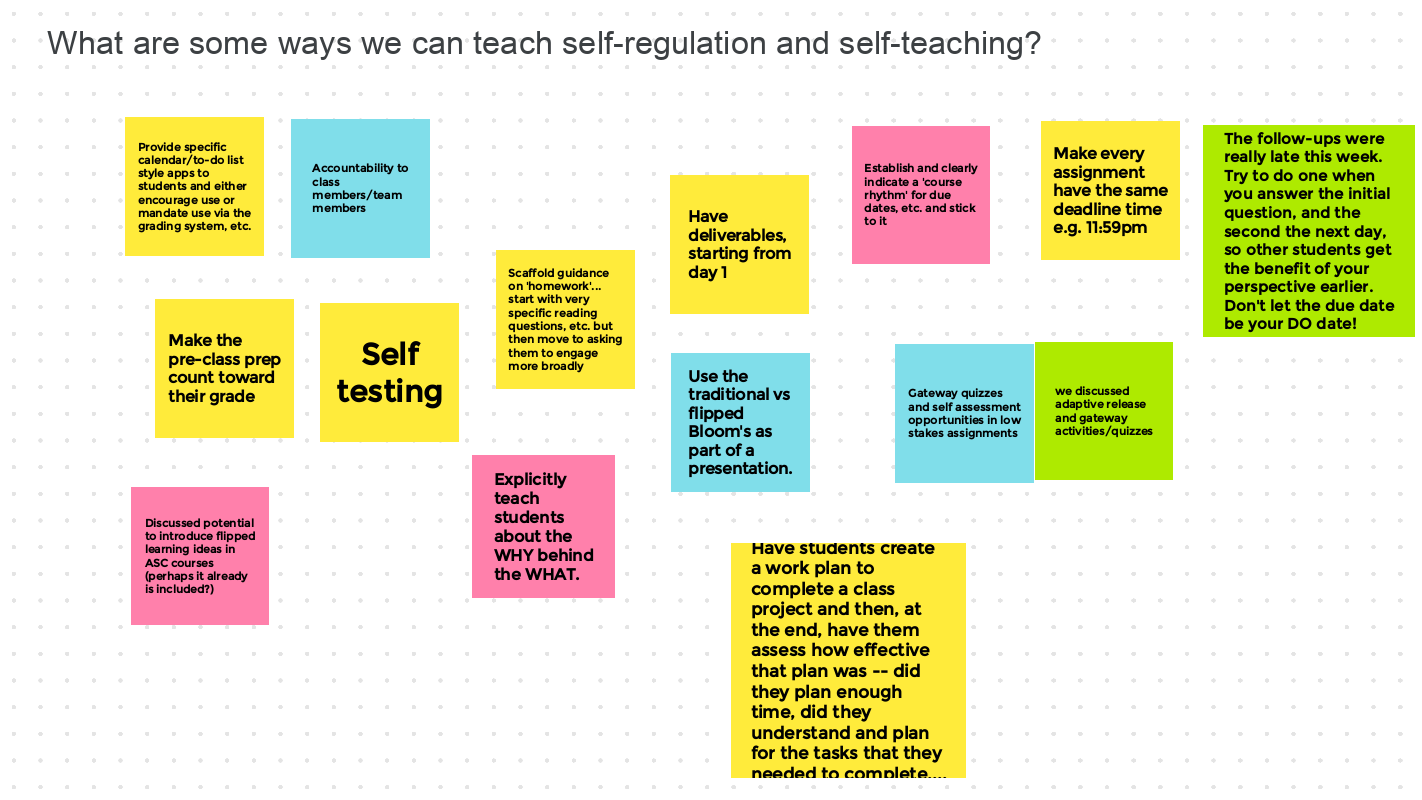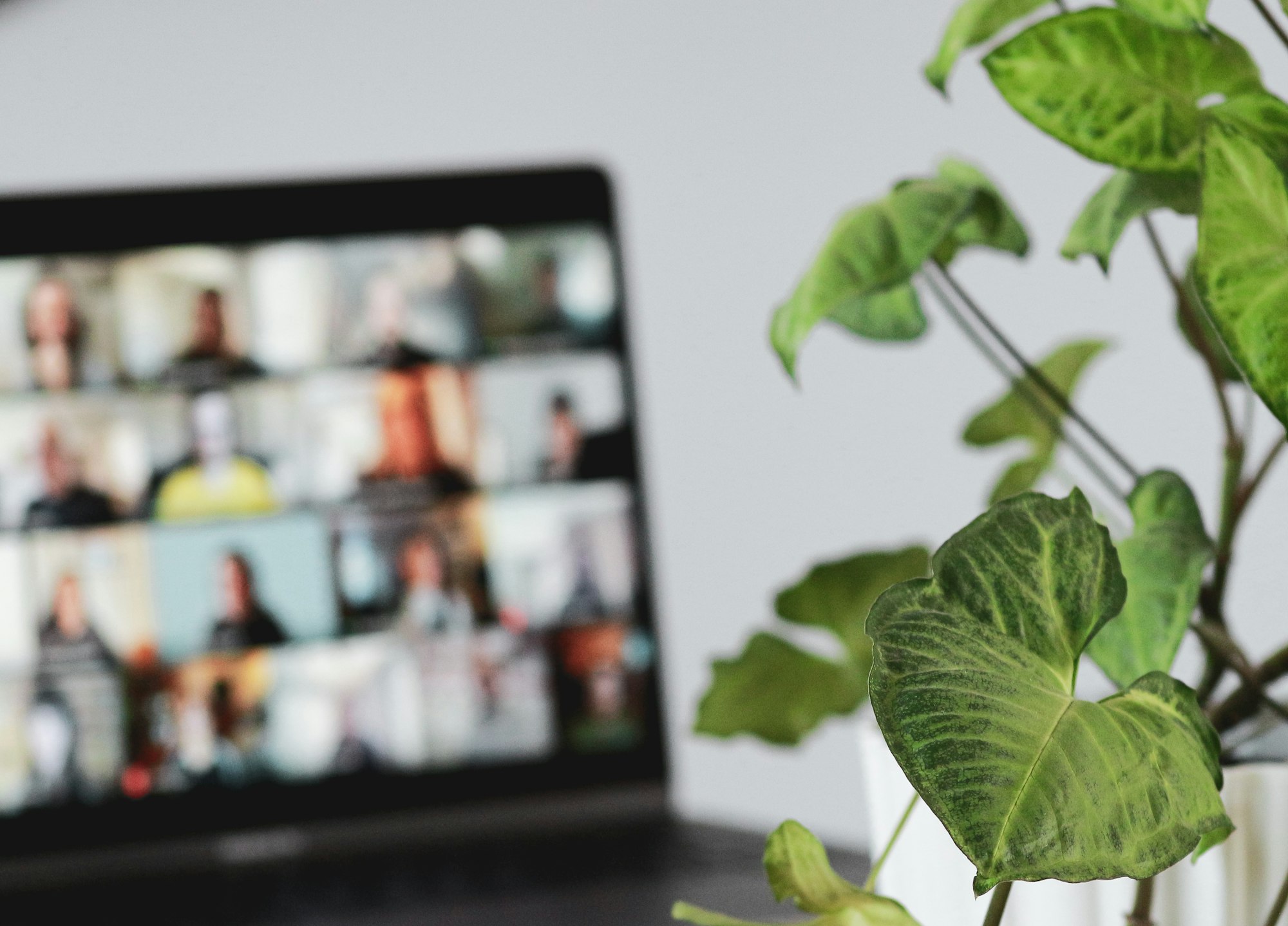Flipped learning and post-pandemic higher education

Last Friday I had the pleasure of working with about 25 faculty at Cleveland State University, to think about how flipped learning might be a key to transformative teaching and learning once we are back from the pandemic. I first worked with CSU faculty back in 2018, when a few of them formed a faculty learning community on flipped learning and read through my book, and they are a really engaged group of faculty, doing frontline classroom teaching that puts everything I've written about flipped and active learning to work. So it's always great to be with them.
This was a 40 minute talk followed by 40 minutes of small group work. Here are the slides from the talk portion:
(Direct link here.)
I explored some territory in this discussion that I've been thinking about lately but never put out in public, either here on the blog or in a talk. Here's a recap of the major points.
Flipped learning is best understood by contrasting it with traditional teaching frameworks: Whereas the traditional framework has students getting first contact with new concepts in class (the "group space" as I call it in my book) and then higher-level interactions are all on the student side through homework and so on (in the "individual space"), flipped learning puts first contact with new ideas before group space activities, then uses the group space for active learning on mid-level tasks. I've described it before in terms of which third of Bloom's Taxonomy happens in which context and that's proven to be a useful and simple way to understand how flipped learning works.
But it's also worthwhile to contrast flipped and traditional frameworks by contrasting the assumptions that each framework makes:
- Traditional frameworks assume that we operate in a scarcity model of information; flipped learning assumes that information is abundant and (mostly) freely available.
- Traditional frameworks assume that technology is scarce, or somehow bad for learning; flipped learning, by virtue of the flexible environment it espouses, views technology as a tool that should be embraced.
- Traditional frameworks assume that students arrive at class as blank slates with no prior knowledge of the new concepts to be learned (why else start there in class?); flipped learning assumes that students have ideas, perhaps flawed in many ways, but nonetheless bring raw materials for learning to the table.
- Perhaps most significantly, traditional frameworks assume that students have no capacity for self-regulation or self-teaching, and in fact it's inappropriate to ask students to do either. (You can tell this by the self-talk of younger students who have experienced exclusively traditional frameworks – "I can't teach myself" when this is obviously false elsewhere in their lives.) Flipped learning not only believes in the ability of students to self-teach and self-regulate, it leans in to that ability and is predicated upon that ability. But it also never assumes that students have honed that ability or even practiced it much; that's why teaching students to self-teach and self-regulate these things is a feature, not a bug, of the framework.
Now think about the seismic changes that the pandemic has brought about in higher education and is still bringing about. Higher education had many assumptions of its own prior to the pandemic, and several of them have been utterly wrecked by it:
- We can no longer assume that we have virtually unlimited access to colocation. In other words, we used to take meeting regularly in person in a classroom completely for granted; we'll never be able to do that again, I would say even once the pandemic is over.
- We can no longer assume that a pure lecture pedagogy is an acceptable teaching model or that banning technology is an acceptable practice. As for lecture, regardless of one's feelings about it, students see right through it and will not accept a talking head as a reasonable use of their time and tuition money, particularly once we are back in person and there's a price to be paid for colocating. And having seen the promise of technology as a tool for effective learning during the Big Pivot, the genie is out of the bottle there as well.
- We can no longer assume that we can assess students through traditional timed testing any time we want. This may be a corollary to the loss of colocation plus the rise of technology, but it seems clear from where I sit that the pandemic dealt a death blow to the entire concept of timed testing. This may only be tangentially related to flipped learning, but it's significant.
- Finally, all four of the pedagogical assumptions of traditional frameworks are now out the window. We can no longer assume scarce information, that we can keep technology at arms' length, that students have empty heads, or that students can't teach themselves things. All four of those have been utterly inverted – or flipped – since last March.
Not only did all these things change, many aspects of teaching and learning before the pandemic have stayed the same, and their need has become more acute and more apparent. We see now more clearly than ever that learning requires connections between people and ideas. We see that a growth mindset is critical for learning and well-being. We definitely see that the need to be able to teach oneself new things and regulate one's own learning is more important than ever – also that the need to guide student growth in self-teaching and self-regulation, painfully lacking in pre-pandemic teaching, is now at a premium.
When you look at all the assumptions that have been overturned in higher education because of the pandemic and all the needs that have only grown during this time, what becomes clear is that flipped learning is the right model for where higher education currently is, and is headed once the pandemic is over. It fits all the emerging assumptions and fulfills all the overarching needs, and steers clear of all the prior models that are now on their way out.
Because make no mistake: Once the pandemic continues to ease and we begin to start making our way back to the physical classroom (like many institutions will be doing in the fall), the worst thing we could do is try to get "back to normal". What a tragic mistake it would be, to exit this horrific time in history by wasting the opportunity to rid ourselves of outdated models – and all their associated injustices, inequities, and inefficiencies – and put on something better for our students. I am saddened by faculty and institutions that seem to want to get back to good-old-fashioned-lecture as soon as humanly possible and say "no" to the opportunity to make this whole enterprise better for everyone. The right way to honor the suffering we've had to endure, some far worse than others, is to emerge from this pandemic with determination to do better.
Following the talk, I wasn't entirely sure how all this would strike the faculty in the audience, so I just asked them – What do you all want to discuss now? And I put up a Jamboard and let them tell me. Here's what we ended up with:

(Direct link here) This idea of teaching self-teaching and self-regulation resonated with a lot of folks, as you can see. So did the nuts and bolts of implementing flipped learning, but since this was a mixed crowd of experts and novices, and because I already have resources for the how-to side, I went with this area to drill down.
A lot of interesting discussion ensued in the small groups and as a big group. I asked the faculty What are some ways we can teach self-regulation and self-teaching? and this is what we generated:

(Direct link here) As you can see, it's a mix of practical and more general thoughts. Each one of these post-its could easily be a blog post here, and perhaps some of them will be. Of course there were also questions along the lines of How do I get students (also colleagues, administrators, etc.) to believe that self-teaching is OK? That one definitely might be something I'll address here later.
At least three things are clear from this event.
- Flipped learning isn't dead – if anything, the pandemic has revealed something that I wondered about early on, namely that flipped learning is in many ways a model or proto-form of what all effective teaching and learning looks like during the pandemic, and now I think also will look like post-pandemic. And teaching with flipped learning now, is an investment in teaching well in the future.
- The stigma of self-teaching is wearing off, and the importance of self-regulation as a core academic skill for students to learn is coming on strong. I never want the concept of self-teaching to mean "We make students do all the work" because they're doing enough of that already; rather, the flipped framework keeps a limit on what students teach themselves and provides instruction and support for getting it done.
- Finally, several faculty mentioned that this was the first time anybody had seriously engaged them with post-pandemic anything. I think a lot of faculty, while understandably wanting to remain clear-eyed about the persistence of Covid-19 and the need for reasonable measures to slow/stop its spread, also want very badly to think about being done with the pandemic. And I think hope is a good thing to dwell on!


